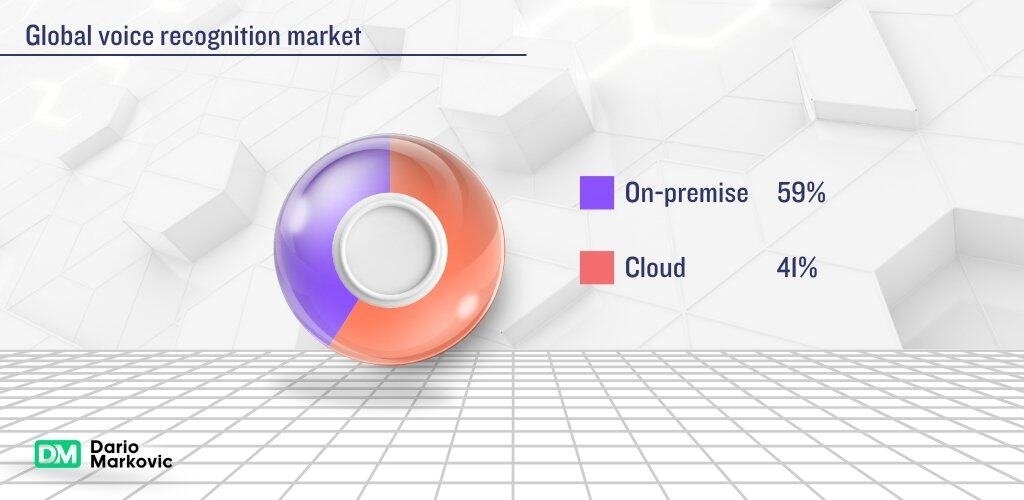Why Optimize for Voice-Controlled Devices?
To optimize for voice-controlled devices is essential in today’s tech-savvy world. With the increasing use of smart speakers and voice assistants, more consumers are using voice commands to interact with their devices.
This shift means that optimizing your online store or website for voice-controlled devices can significantly enhance user experience and drive more traffic.
What You Can Learn in This Blog
Statistics and Practical Tips: Get insights into the latest statistics on voice-controlled device usage and practical tips for implementation, such as creating an FAQ page and optimizing for local search.
Key Strategies and Technical Aspects: Discover essential strategies and technical steps to optimize your online store for voice-controlled devices, including the use of natural language, long-tail keywords, schema markup, and mobile optimization.
Understanding Voice Search Behavior: Learn how voice search differs from traditional text search and why it’s crucial to optimize for voice-controlled devices to meet the growing demand.
Understanding Voice Search Behavior
When you optimize for voice-controlled devices, it’s crucial to understand how voice search behavior differs from traditional text search. Voice searches are typically longer and more conversational. For example, instead of typing “best coffee shop,” a user might ask, “Where is the best coffee shop near me?” This means your content needs to be more natural and conversational to match these queries.
Key Strategies to Optimize for Voice-Controlled Devices
To optimize for voice-controlled devices, consider these key strategies:
- Use Natural Language: Write content that mimics how people speak. This includes using complete sentences and a conversational tone.
- Focus on Long-Tail Keywords: Voice searches are often longer, so targeting long-tail keywords can help capture these queries.
- Answer Questions: Many voice searches are in the form of questions. Structure your content to provide clear and concise answers.
- Improve Page Speed: Voice search users expect quick results. Ensure your website loads quickly to meet these expectations.
Technical Aspects of Optimization
Optimizing for voice-controlled devices involves several technical aspects:
- Schema Markup: Implement schema markup to help search engines understand your content better. This can improve your chances of appearing in voice search results.
- Mobile Optimization: Ensure your website is mobile-friendly, as many voice searches are conducted on mobile devices.
- SSL Certificate: Secure your website with an SSL certificate. Secure sites are more likely to be favored by search engines for voice search results.
Comprehensive Statistics on Voice-Controlled Devices

Market Size and Growth
The voice-controlled devices market has seen substantial growth over the past few years. As of 2023, the global market size for speech and voice recognition was valued at approximately $12.62 billion. This market is projected to grow to $15.46 billion in 2024 and reach a staggering $84.97 billion by 2032, exhibiting a compound annual growth rate (CAGR) of 23.7% during the forecast period.
Main Players in the Market
Several key players dominate the voice-controlled devices market. These include:
- Amazon: Known for its Alexa-enabled devices, Amazon holds a significant share of the market.
- Google: With Google Assistant integrated into various devices, Google is a major competitor.
- Apple: Siri, integrated into iPhones, iPads, and HomePods, makes Apple a key player.
- Microsoft: Cortana, although less prominent, still plays a role in the market.
- Samsung: Bixby, integrated into Samsung devices, adds to the competitive landscape.
Sales Numbers by Company
- Amazon: As of 2023, Amazon had sold over 100 million Alexa-enabled devices.
- Google: Google has sold approximately 52 million Google Home devices.
- Apple: Apple has sold around 30 million HomePods.
Projected Growth
The voice-controlled devices market is expected to continue its rapid growth. The market size is forecasted to increase by $10.51 billion between 2023 and 2028, growing at a CAGR of 23.07%. This growth is driven by factors such as the convenience and improved user experience offered by voice-controlled devices, as well as the rise in digital transformation initiatives.
Manufacturing Costs
Manufacturing costs for voice-controlled devices vary depending on the complexity and features of the device. On average, the cost to manufacture a basic smart speaker ranges from $30 to $50. More advanced devices with additional features, such as high-quality speakers and enhanced voice recognition capabilities, can cost upwards of $100 to manufacture.
Market Segmentation
The voice-controlled devices market can be segmented by component and application:
- Component: The market is divided into hardware and software components. Hardware includes the physical devices, while software encompasses the voice recognition and processing algorithms.
- Application: Key applications include smart home devices, automotive, healthcare, and consumer electronics.
Regional Insights
The market is also segmented by region, with North America, Europe, Asia-Pacific, South America, and the Middle East and Africa being the primary regions. North America holds the largest market share, followed by Europe and Asia-Pacific2.
User Demographics
Voice-controlled devices are popular across various demographics, but they are particularly favored by younger consumers and tech-savvy individuals. Approximately 35% of households in the U.S. own a smart speaker, and this number is expected to grow as the technology becomes more accessible and affordable.
By understanding these statistics, you can better appreciate the significance of optimizing your online store for voice-controlled devices. This growing market presents numerous opportunities for businesses to enhance user experience and stay ahead of the competition.
Common Challenges and Solutions
When you optimize for voice-controlled devices, you may encounter some challenges:
- Understanding User Intent: Voice searches can be ambiguous. Use analytics to understand common queries and refine your content accordingly.
- Adapting to Different Devices: Different voice-controlled devices may interpret queries differently. Test your website on various devices to ensure compatibility.
- Maintaining SEO Best Practices: Balancing traditional SEO with voice search optimization can be tricky. Focus on creating high-quality, relevant content that serves both purposes.
Best Tools for Optimizing Your Online Store for Voice-Controlled Devices
Optimizing your online store for voice-controlled devices can be streamlined with the right tools. Here are some of the best tools to help you achieve this:
1. Google Search Console
Google Search Console is an essential tool for monitoring your website’s performance in search results, including voice searches. It provides insights into how your site is performing, identifies issues, and offers suggestions for improvement. You can track voice search traffic and analyze the queries that bring users to your site.
2. AnswerThePublic
AnswerThePublic helps you understand what questions people are asking about your products or services. It generates a visual map of questions and phrases related to your keywords, which can be incredibly useful for creating content that matches voice search queries.
3. SEMrush
SEMrush is a comprehensive SEO tool that offers keyword research, site audits, and competitive analysis. It helps you identify long-tail keywords and phrases that are commonly used in voice searches. SEMrush also provides insights into your competitors’ strategies, allowing you to stay ahead in the voice search optimization game.
4. Schema.org
Schema.org provides guidelines for implementing schema markup on your website. Schema markup helps search engines understand your content better, increasing the chances of your site appearing in voice search results. This tool is crucial for enhancing the visibility of your content in voice searches.
5. Yoast SEO
Yoast SEO is a popular WordPress plugin that helps you optimize your content for search engines, including voice search. It offers features like keyword optimization, readability analysis, and schema markup integration. Yoast SEO ensures your content is well-structured and easily understood by search engines.
6. Moz
Moz offers a suite of SEO tools that can help with voice search optimization. It provides keyword research, site audits, and link building tools. Moz’s keyword explorer is particularly useful for finding long-tail keywords that match voice search queries.
7. BrightLocal
BrightLocal is a tool focused on local SEO, which is crucial for voice search optimization. It helps you manage your local listings, track local search rankings, and gather customer reviews. Optimizing for local search ensures your business appears in voice searches that include location-specific queries.
8. Dialogflow
Dialogflow by Google is a tool for building conversational interfaces, including voice assistants. It allows you to create custom voice interactions for your website or app, enhancing the user experience for voice search users.
By leveraging these tools, you can effectively optimize your online store for voice-controlled devices, improve your search rankings, and provide a seamless experience for your customers.
Practical Tips for Implementation
Here are some practical tips to help you optimize for voice-controlled devices:
- Create an FAQ Page: An FAQ page can address common questions directly, making it easier for voice assistants to find and relay this information.
- Use Conversational Phrases: Incorporate phrases that people are likely to use in voice searches.
- Optimize for Local Search: Many voice searches are local. Ensure your business information is up-to-date on Google My Business and other local directories.
- Monitor and Adjust: Regularly review your website’s performance and make adjustments as needed to improve voice search optimization.
Real-Life Experience: Optimizing an Online Store for Voice-Controlled Devices
I found an insightful experience shared by a user on Reddit who successfully optimized their online store for voice-controlled devices. Here’s their story:
User: TechSavvyShopOwner
As an online store owner, they noticed a significant shift in how customers were interacting with their website. More and more, they saw traffic coming from voice searches. They decided it was time to optimize their store for voice-controlled devices.
First, they focused on understanding the behavior of voice search users. They realized that voice searches are more conversational and often in the form of questions. For example, instead of typing “buy running shoes,” users would ask, “Where can I buy running shoes near me?” This insight led them to adjust their content strategy to include more natural language and long-tail keywords.
Next, they implemented schema markup on their website. This helped search engines better understand their content and improved their chances of appearing in voice search results. They also made sure their website was mobile-friendly and secured with an SSL certificate, as many voice searches are conducted on mobile devices.
One of the biggest challenges they faced was understanding user intent. Voice searches can be ambiguous, so they used analytics to identify common queries and refined their content accordingly. They also tested their website on various voice-controlled devices to ensure compatibility.
The results were impressive. They saw a noticeable increase in traffic and customer engagement. Many customers appreciated the convenience of using voice commands to find products and place orders. This positive feedback reinforced their decision to prioritize voice search optimization.
Here are some practical tips based on their experience:
- Create an FAQ Page: Address common questions directly, making it easier for voice assistants to find and relay this information.
- Use Conversational Phrases: Incorporate phrases that people are likely to use in voice searches.
- Optimize for Local Search: Ensure your business information is up-to-date on Google My Business and other local directories.
- Monitor and Adjust: Regularly review your website’s performance and make adjustments as needed to improve voice search optimization.
Optimizing their online store for voice-controlled devices has been transformative. It not only improved their efficiency but also enhanced their customers’ experience. They highly recommend other online store owners consider this optimization to stay ahead of the curve.
This real-life experience highlights the practical steps and benefits of optimizing an online store for voice-controlled devices. By following these strategies, you can enhance user experience and drive more traffic to your site.
Personal Experience with Voice-Controlled Devices
Optimizing my online store for voice-controlled devices has been a transformative experience. Being able to use voice commands to manage my store has made my life significantly easier. I can update inventory, check orders, and even respond to customer inquiries without having to sit down at a computer. This convenience has not only improved my efficiency but also allowed me to focus on other important aspects of my business.
Optimizing for voice-controlled devices has also enhanced my customers’ experience. I’ve received feedback from several customers who appreciate being able to find products and place orders using their voice assistants. This positive feedback has reinforced my decision to prioritize voice search optimization and continue refining my approach.
By following these strategies and tips, you can optimize for voice-controlled devices and provide a seamless, user-friendly experience for your customers. Whether you’re a busy professional or a business owner looking to stay ahead of the curve, voice search optimization is a valuable investment for the future of your online store.
FAQ
Voice commerce, also known as voice-activated shopping or v-commerce, refers to using voice-enabled devices or virtual assistants to search for products, make purchases, and interact with brands through speech commands. This technology allows customers to shop hands-free, making the online shopping experience faster and more convenient.
Optimizing your online store for voice-controlled devices can significantly enhance user experience, increase accessibility, and drive more traffic to your site. With the growing popularity of smart speakers and voice assistants, more consumers are using voice commands to interact with their devices, making it essential to cater to this trend.
Voice searches are typically longer and more conversational compared to text searches. For example, instead of typing “best coffee shop,” a user might ask, “Where is the best coffee shop near me?” This means your content needs to be more natural and conversational to match these queries.
To optimize for voice-controlled devices, consider these strategies:
- Use natural language and conversational phrases.
- Focus on long-tail keywords.
- Answer common questions directly in your content.
- Improve your website’s page speed.
Key technical aspects include:
- Implementing schema markup to help search engines understand your content.
- Ensuring your website is mobile-friendly.
- Securing your website with an SSL certificate.
- As of 2024, over 50% of all searches are conducted via voice.
- Approximately 35% of households in the U.S. own a smart speaker.
- Voice commerce sales are projected to reach \$40 billion by 2025.
- 72% of people who own voice-activated speakers use them as part of their daily routine.
Common challenges include:
- Understanding user intent, as voice searches can be ambiguous.
- Adapting to different devices, as they may interpret queries differently.
- Balancing traditional SEO with voice search optimization.
Practical tips include:
- Creating an FAQ page to address common questions.
- Using conversational phrases in your content.
- Optimizing for local search by updating your business information on Google My Business.
- Regularly reviewing your website’s performance and making necessary adjustments.
Businesses that have optimized for voice-controlled devices have seen improved user experience and increased customer satisfaction. Customers appreciate the convenience of using voice commands to find products and place orders, which can lead to higher engagement and sales.
To measure the success of your voice search optimization, you can track several key metrics:
- Voice Search Traffic: Use analytics tools to monitor the amount of traffic coming from voice searches.
- Conversion Rates: Check if there is an increase in conversions from voice search users.
- User Engagement: Look at metrics like time spent on site and bounce rate for voice search users.
- Customer Feedback: Gather feedback from customers about their experience using voice commands on your site.
Content that works best for voice search optimization includes:
- FAQs: Directly answer common questions your customers might ask.
- How-To Guides: Provide step-by-step instructions that can be easily read aloud by voice assistants.
- Local Content: Optimize for local search queries by including location-specific information.
- Conversational Content: Use a natural, conversational tone that mimics how people speak.
To optimize product descriptions for voice search:
- Use Natural Language: Write descriptions as if you are speaking to a customer.
- Highlight Key Features: Clearly state the main features and benefits of the product.
- Include Long-Tail Keywords: Incorporate phrases that customers might use in voice searches.
- Answer Potential Questions: Think about what questions customers might have and address them in the description.
Yes, several tools can assist with voice search optimization:
- Google Search Console: Provides insights into how your site is performing in search results, including voice searches.
- AnswerThePublic: Helps identify common questions and phrases people use in searches.
- SEMrush: Offers keyword research and tracking tools to optimize for voice search.
- Schema.org: Provides guidelines for implementing schema markup on your site.
Mobile optimization is crucial for voice search because many voice searches are conducted on mobile devices. Ensure your website is mobile-friendly by:
- Using Responsive Design: Make sure your site adapts to different screen sizes.
- Improving Page Speed: Optimize images and reduce load times to enhance user experience.
- Simplifying Navigation: Make it easy for users to find what they need on your site.
Yes, optimizing for voice search can improve your overall SEO. By focusing on natural language, long-tail keywords, and user intent, you create high-quality content that benefits both voice and traditional search. Additionally, implementing technical aspects like schema markup and mobile optimization can enhance your site’s visibility and performance in search results.



